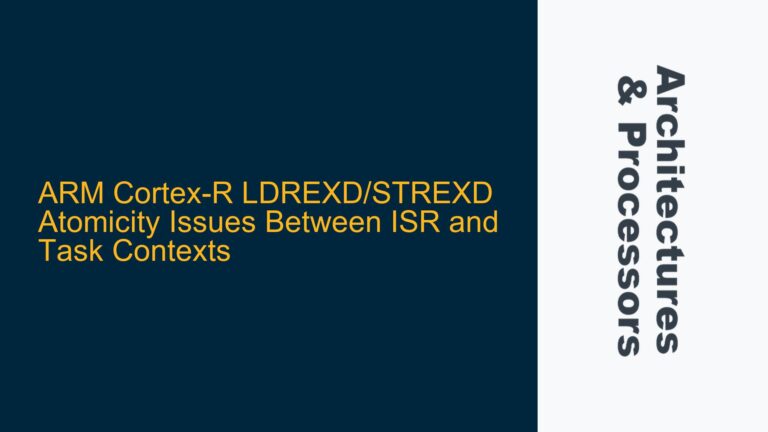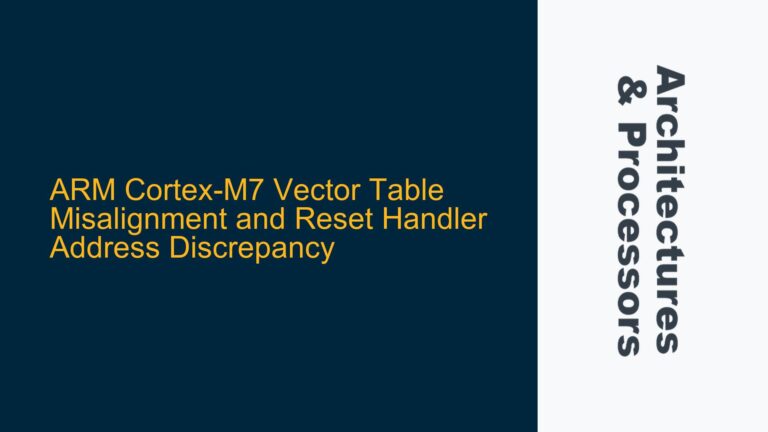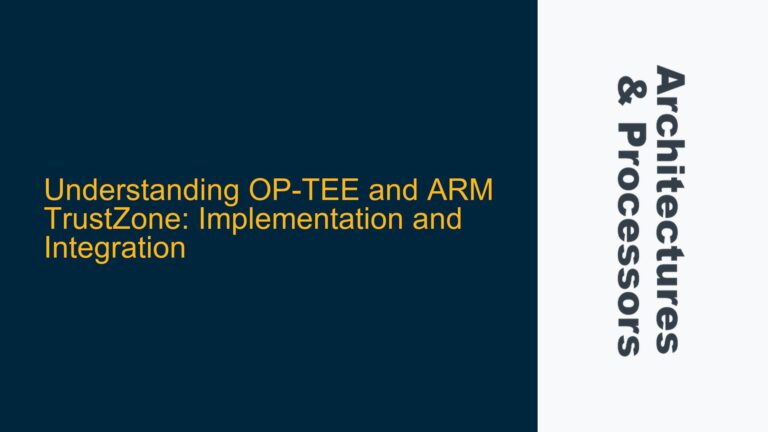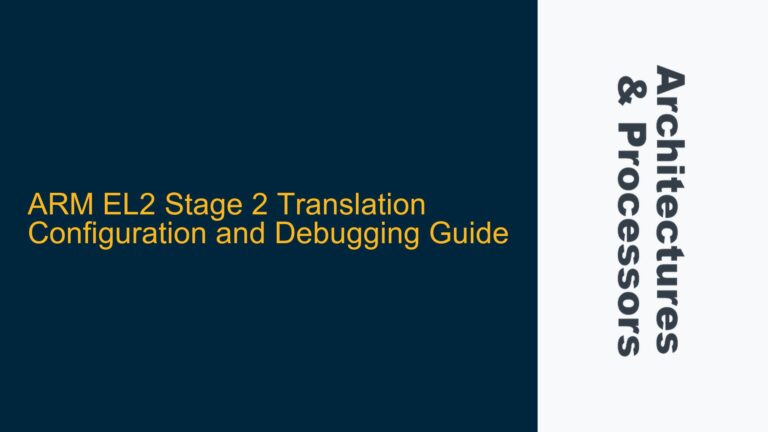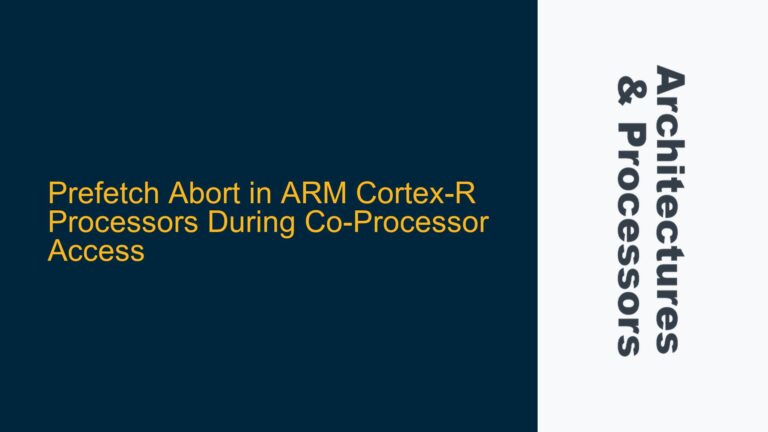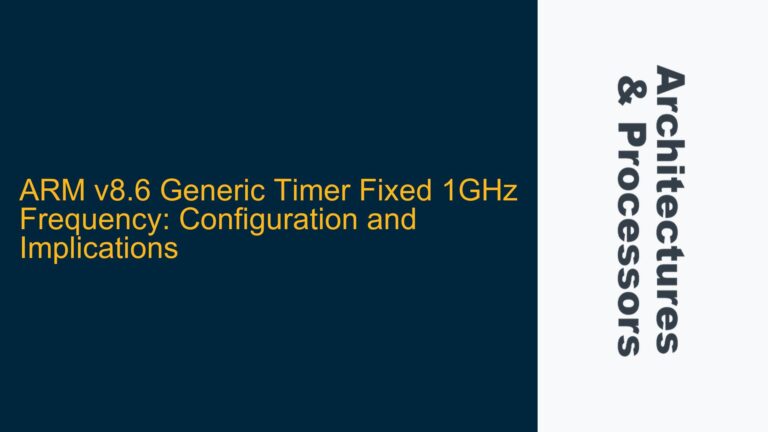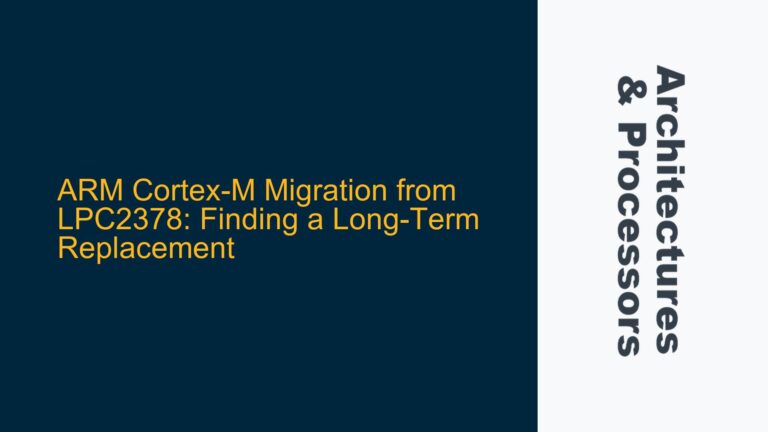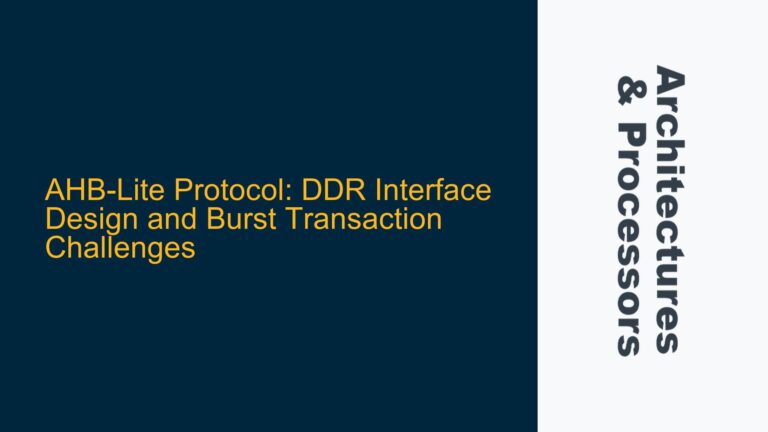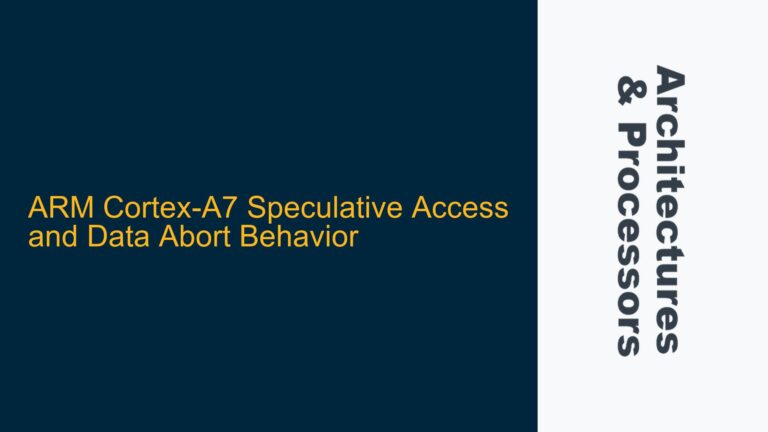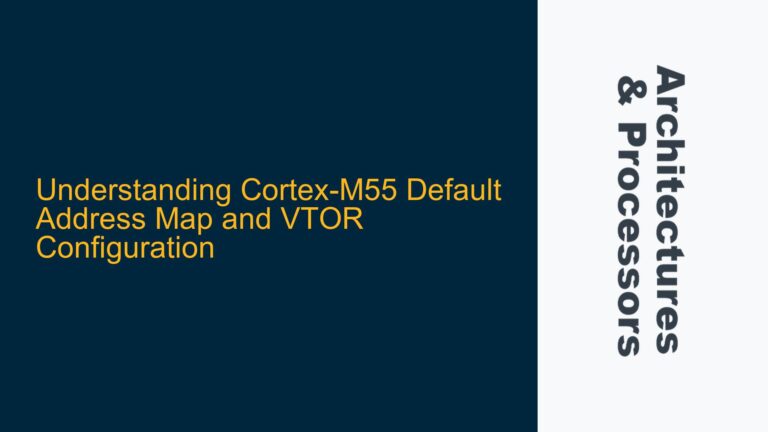ARM Cortex-R LDREXD/STREXD Atomicity Issues Between ISR and Task Contexts
ARM Cortex-R Atomic Double-Word Transfer Challenges Between ISR and Task The ARM Cortex-R series processors, known for their real-time capabilities and robust interrupt handling, often require careful consideration when implementing atomic operations across different execution contexts. One such scenario involves the use of LDREXD (Load Exclusive Double-Word) and STREXD (Store Exclusive Double-Word) instructions to facilitate…
